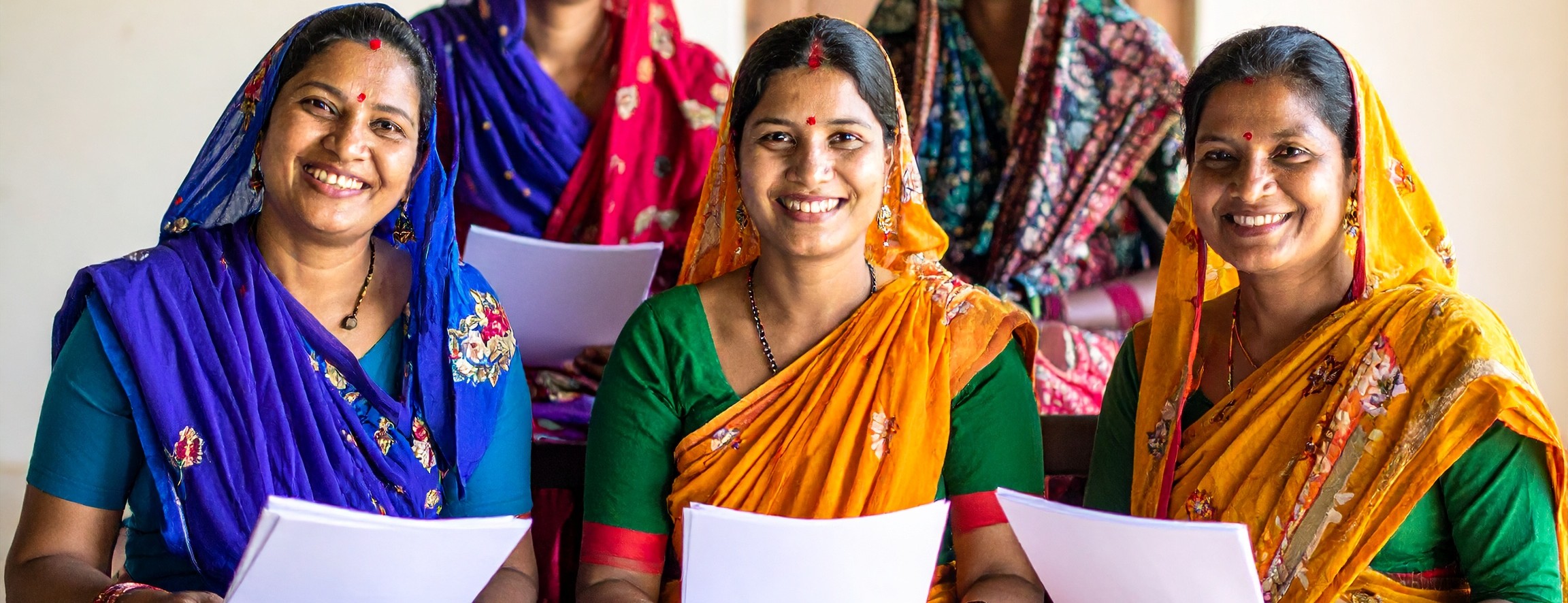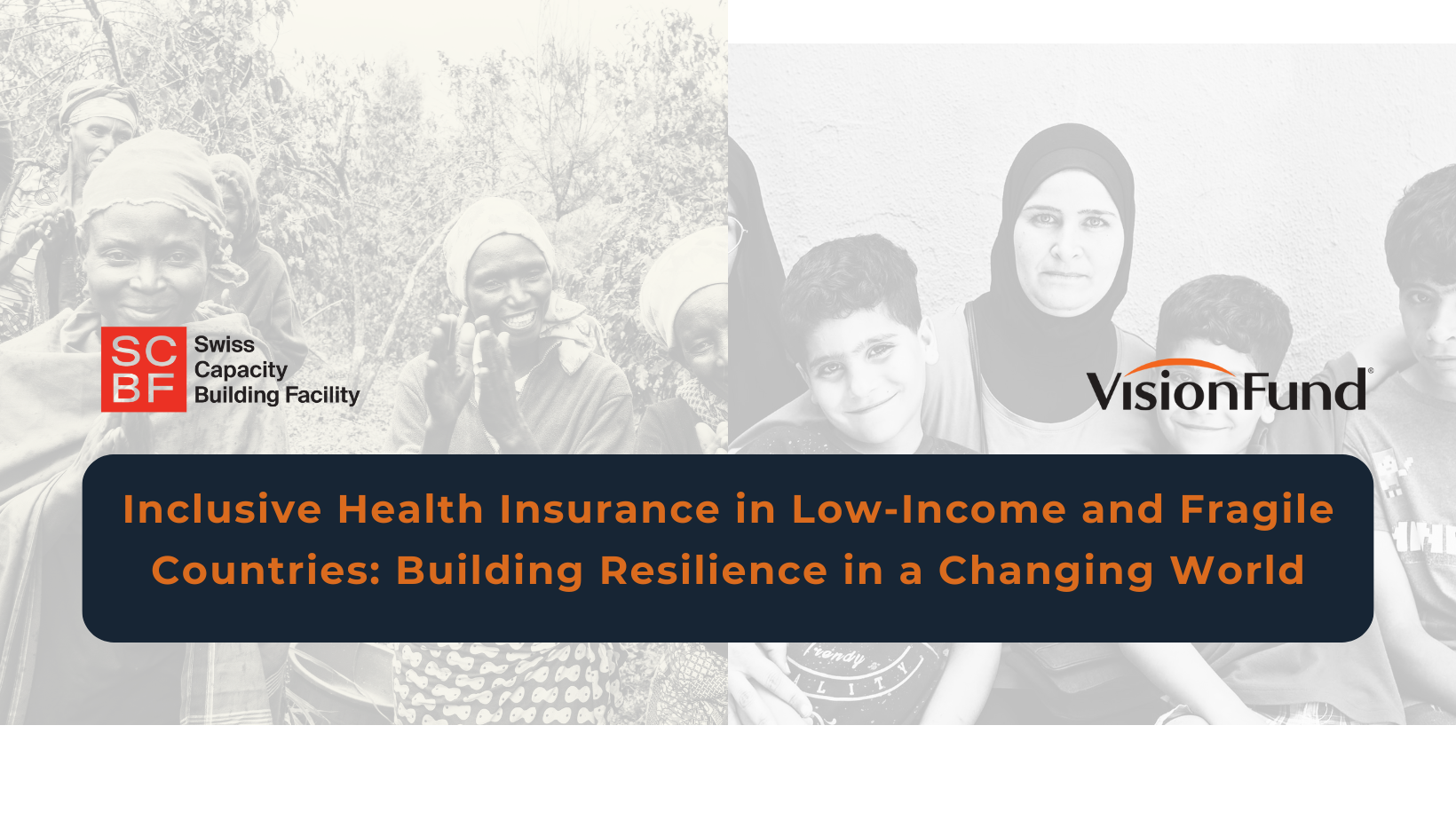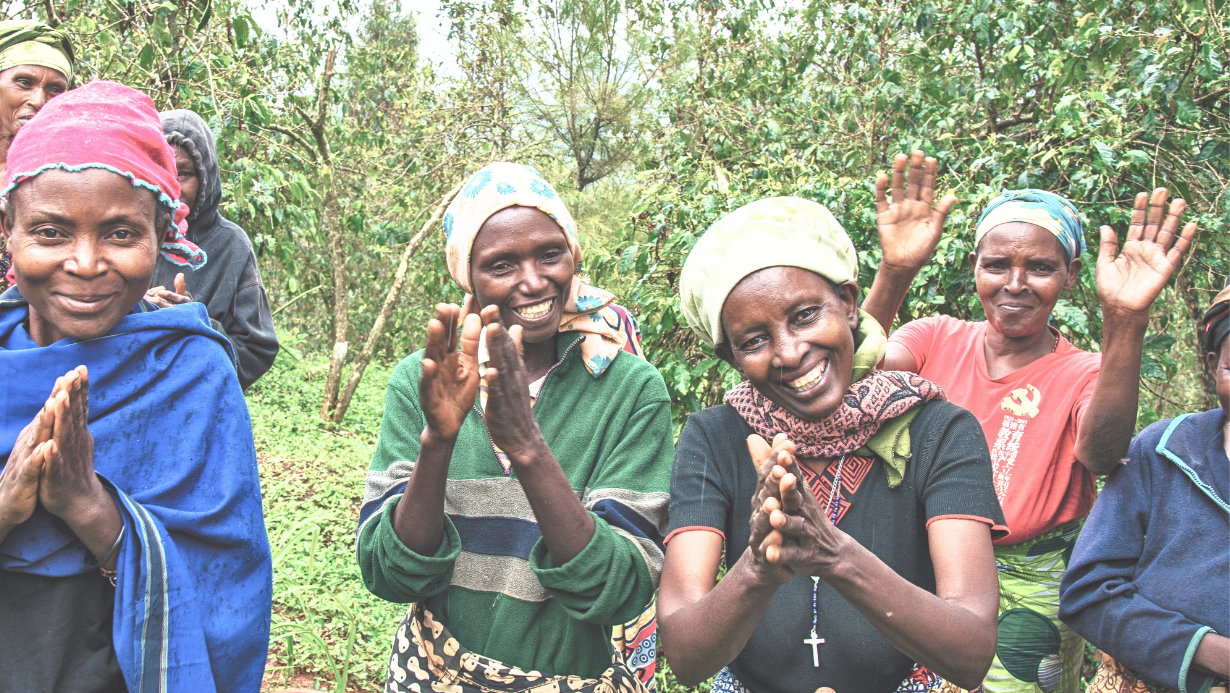Theory meets practice: How can blockchain technology help to scale customer-centric financial services today?

Blockchain. It’s not exactly new. And yet its popularity seems to have re-emerged in recent months, perhaps because of the advent of the so-called Web3 technology, which promises to deliver a better suite of blockchain technologies to solve problems ranging from climate change to money laundering. Yet, despite all of the promise, according to one estimate, up until 2019, 90 percent of blockchain projects failed, likely due to a lack of existing models for managing the adoption of blockchain-driven business innovation in a sustainable way. In another study, a 2019 survey of 1,386 senior executives from twelve countries, the share of respondents who have actually initiated blockchain deployments decreased from 34 percent in 2018 to 23 percent in 2019.
Will blockchain deliver on promises and provide the basis for critical solutions to achieve the Sustainable Development Goals (SDGs)? Or will the potential fail to translate into practical use cases for low-income communities? SCBF staff were determined to sift through the hype to understand if and how blockchain technology is delivering practical benefits, today. Of course, we are particularly interested in those that support partners working towards our mission: to solve specific problems preventing universal access to meaningful, customer-centric financial services. This led to two key research questions:
1. Which blockchain applications are delivering value today, and which are promising value only in a future reality of infrastructure, business models, regulatory environments, and levels of consumer digital literacy that do not yet exist?
2. Which blockchain applications are solving actual problems that prevent access to financial services, rather than potential or hypothetical problems?
To answer this question, we turned first to recent blog posts and publications. While many were helpful for understanding the potential of blockchain, we found very little that could help us answer these questions. Thus, we turned to innovators who are testing different blockchain applications, knowing from experience that it is only through understanding practical use cases and documentation of insights that we are able to expand our knowledge of what works in financial inclusion.
Practical examples
To highlight what we’ve learned, we’ve detailed below the experience of two innovators: Gravity and ACRE Africa.
Gravity provides verifiable digital identity wallets that allow users to issue and share Verifiable Credentials securely. Gravity currently operates in Kenya.
What financial inclusion problem are they solving? To access financial services, individuals have to share a wide range of information to meet customer due diligence and know-your-customer (KYC) requirements, ranging from an identity (ID) card to business cash flow history. This information can be costly to collect and verify – costs that can keep financial institutions from serving low-income customers. Even once the information is verified, it can then be costly for the financial institution to authenticate that identity for each new transaction (for example, setting up an ATM network that can securely authenticate identity through a combination of ATM card and personal PIN code).
Which blockchain application(s) are they using? To solve this problem, Gravity is using blockchain to share Verifiable Credentials to lower the cost of sharing and verifying information. For example, Gravity is already working with the Kenyan Red Cross to provide beneficiaries with a decentralised identity “wallet” that can hold their individual identity information as well as their history of accessing different services from the Red Cross. They are now testing the same technology to allow shopkeepers (MSMEs) to share cash flow history and KYC information with financial institutions to access a loan.

How does it work? Every time an individual sends a Verifiable Credential, the individual signs that credential with a private key (analogous to a password or signature) that locks the credential so that it cannot be tampered with. The receiver, also called verifier in the self-sovereign ID (SSI) ecosystem, in this case the Kenyan Red Cross or the financial institution, can then check that this private key is associated with the individual’s public key stored on a public blockchain (analogous to an email address).
What are the benefits? Right now, Gravity’s solution helps the Kenyan Red Cross to authenticate beneficiaries quickly (within 30 seconds), improving the beneficiary experience and ensuring that funds are delivered to the correct recipients. In the near future, with the MSME pilot, financial institutions should see similar benefits, in that it will be quicker and less expensive to verify KYC and credit history documents. In the future, as more service providers become a part of the Gravity ecosystem, individuals might be able to use the same digital wallet to authenticate themselves with credentials to access services from NGOs to financial institutions to hospitals or other providers, streamlining the customer experience, driving down costs, and allowing individuals to control their personal data at scale.
Is it customer centric? The service can be used either with or without a smartphone. With a smartphone, beneficiaries create their digital wallet through the Gravity app. Later, when the NGO or financial institution needs to authenticate the beneficiary’s information, the beneficiary can remotely authenticate themselves by responding to a notification through the same app. Without a smartphone, the NGO, or any other trusted organisation wishing to onboard their users using a digital ID, creates the digital wallet on the beneficiary’s behalf. The beneficiary is then issued a QR code, which a service provider can scan at a later date when the identity needs to be authenticated.
Thus, there isn’t a heavy burden on users to understand how to use the technology. That being said, blockchain-based ID wallets promise to provide users with control over their own data. In a future where the ID wallet contains a large amount of identity information that can be shared with multiple service providers, there will be a significant amount of customer education required in order to explain the nuances of sharing personal data and providing consent for service providers to use this data. This problem is not unique to blockchain; however, the level of user control provided by de-centralised wallets will likely require more education than traditional consent models.
ACRE Africa is a licensed insurance intermediary that provides solutions for farmers to reduce agricultural and climate risks.
ACRE operates in Kenya, Rwanda, Tanzania, Uganda, Ghana, Malawi, Senegal, and Mozambique, and is currently running a pilot of digitally-enabled parametric insurance in Kenya.

What problem are they solving? Only three percent of African smallholder farmers actually buy insurance (2018 estimate), leaving these farmers at risk of losing significant income if their crops fail due to weather. This risk is only increasing, as climate change raises the likelihood of extreme weather events including drought and flooding. There are many reasons for the low uptake of insurance among farmers. Parametric, index-based insurance using blockchain-based smart contracts has the potential to help solve two of these problems:
- The high cost of distributing insurance to and verifying claims from small and geographically dispersed farmers, and
- A perceived lack of trust among farmers that insurance companies will pay out as promised, which may lead to a hesitation to sign up for new insurance products.
Which blockchain application(s) are they using? ACRE Africa is piloting the use of blockchain to create smart contracts to enable parametric insurance. Smart contracts conceptually exist separate from blockchain, but in reality, blockchain holds the promise of being the first technology to enable smart contracts. In an index insurance product such as the one offered by ACRE, the smart contract is essentially an algorithm that uses computer programming to say, for example: if the rainfall index is below 10 mm in a given month in a given area, the farmer receives $100; otherwise, the farmer receives $0. By using the blockchain, fewer actors need to be involved in enforcing the contract (in this case, a human does not have to record the rainfall amount and then set up a payment, as this is all pre-programmed). If there is a dispute in the amount of rainfall or the amount of the payment, all of the necessary information to resolve the dispute is recorded on the public blockchain (the agreed upon rainfall trigger, the agreed upon payout amount, and the actual amount of rainfall). With a public and immutable (unchangeable) record of this information, it is quicker and cheaper to settle disputes. Thus, by lowering enforcement costs, smart contracts lower overall transaction costs, which (hopefully) will translate into lower costs to the end client.[1]
How does it work? ACRE packages this in a card with a USSD code that can be used to activate the product via a mobile phone and collect the required data, such as the GPS coordinates of the farm, type of crop and amount paid. These cards are distributed by village champions or agents, who provide farmers with trainings on crop insurance. If the farmer would like parametric insurance to help cover the cost of the seed in case of an extreme weather event, the farmer can dial the number on the card to register. The farmer can then pay the premium automatically from their MPesa (mobile money) account. ACRE uses geolocation to determine location and enable satellite monitoring of the specific plot. Based on this, the index is established, and the farmer automatically receives the relevant payout if they meet the set threshold for compensation.
What are the benefits? There are many benefits to digitally-enabled parametric insurance for smallholder farmers. Narrowing in on the specific value-add of using blockchain on top of the other digital components (including weather towers, geolocation, mobile money etc.), right now, is to create trust in the insurance product, by building the public and immutable record of contractual details and index triggers. In the future, the use of blockchain rather than alternatives such as APIs or cloud storage should support scale, as the technology can handle a large number of data sources without additional IT development or data storage costs.
Is it customer centric? Farmers do not need to understand that their insurance is enabled by blockchain in order to safely use the product. The entire service can be used without a smartphone. As part of the project (while not enabled by blockchain), ACRE has set up a hotline to answer any questions. After a pilot, the net promoter score (NPS) for ACRE insurance went up. Women, in particular, are opting for the product at a higher frequency because of the high level of transparency and the ability to call the hotline rather than visit an agent in-person. Furthermore, this product makes it possible for farmers to query the status of their insurance policy at any given time during the season , as well as to cash out compensation mid-season as opposed to waiting 120 days. Not only has this increased trust but also played a big role in breaking the trust barrier, one of the biggest hurdles preventing uptake of crop insurance.
Insights
What did we learn through the process of reading up on blockchain and speaking to innovators including Gravity and ACRE?
First, while we are seeing some practical applications of blockchain to help drive solutions to achieve the SDGs, we are seeing far fewer practical applications of cryptocurrency, one of the many blockchain applications. As noted by Hilary Allen, Professor of Law at American University, in her recent talk during the Global Digital Development Forum (May 5, 2022), cryptocurrency arguably introduces unnecessary risk and complexity into low-income economies. The recent crypto crash (May 2020) supports Allen’s arguments, and suggests that even so-called stablecoins are not entirely safe. We did find one practical, pre-crash use of cryptocurrency, from SCBF partner Pezesha, who allows investors to provide funds in crypto. As this does not entail asking low-income clients to accept any risk, it may effectively provide new channels for holders of capital to channel funds towards solutions for low-income communities. That being said, this use case is not solving an existing barrier to financial inclusion.
Second, ‘blockchain’ (and, similarly, Web3) effectively refers to a number of different technologies with different value propositions. It is critical (and difficult) to understand the implications of private vs public blockchain, and permissioned vs non-permissioned blockchains, and how each of these choices impacts the technology’s ability to solve a given problem (refer to this UNCTAD 2021 report for more detail.) Each comes with trade-offs. For example, public blockchains, as of today, are the technology that is raising greenhouse gas emissions, due to the energy required to keep the data secure (a problem that has not yet been solved although multiple companies promise to deliver carbon neutral blockchain technology in the near future). On the other hand, private, permissioned blockchains offer single-use and localised use cases. With these use cases, centralised intermediaries remain in place and promises associated with decentralisation are not delivered. Thus, private permissioned blockchains improve existing processes, without transforming them.
Our conclusions (for now…)
Blockchain has yet to deliver benefits at scale, especially for low-income communities. Many of the benefits of blockchain, even for the most practical use cases we could find, will only be realised in the future when applications have scaled. Scaling these applications will require behaviour change, new regulations, new infrastructure, and new levels of digital literacy. Therefore, while philanthropic funds should be open to partners who use blockchain to solve specific problems, our philanthropic funds will not chase after blockchain solutions. Private funds can be used to test entirely new solutions in less risky environments, while, we believe, philanthropic funds can be better used to adapt tried and tested solutions in new contexts.
For our existing or potential partners currently using or interested in using blockchain, this research process has helped us to refine the list of questions we’ll ask to understand the added value of the technology:
- What is the actual problem being solved? Do you have evidence from user interviews or other research that this, in fact, is a problem that is hindering access to financial services?
- What is the value-add of blockchain over or in addition to other digital technologies such as secure APIs, cloud storage, or mobile payments within the particular intervention?
- What specific data is being held on the blockchain? Is it a public or private blockchain? If it is public, what benefits is this level of transparency delivering? Is this level of security against tampering a requirement, or a nice-to-have?
- Where is private user data held and how is it secured? (hint: the answer should not be on the public chain)
- Tell us more about the user experience. How might blockchain make it easier or harder for individuals to understand the product? How is this accounted for in the project’s approach to client onboarding and education?
Blockchain has the potential to be a foundational technology that creates new economic and social systems, rather than merely a “disruptive” technology. It will be a gradual and steady process. The challenge is to be neither too quick to accept blockchain promises as truth, nor too slow to adapt this technology to the pressing problems facing low-income communities. Let the private sector lead the way: we’ll be ready to learn, document insights, and fund tried and tested solutions that can scale meaningful access to customer-centric financial solutions.
[1] Example modified from World Bank (2020) – Smart Contract Technology and Financial Inclusion.























































.png)











































